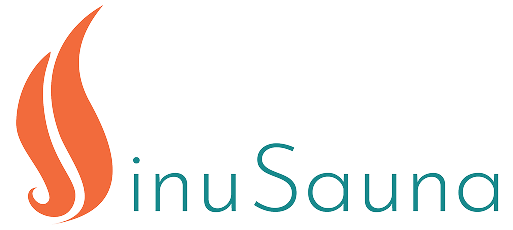Sinus congestion is a drag. That blocked, stuffy feeling in your nose and sinuses — you can’t breathe properly, you have post-nasal drip, you wake up feeling groggy, you may even have pressure or headaches. Many of us have tried one remedy after another: saline nasal rinses (you know, the neti-pots and squeeze bottles), sprays, decongestants, maybe even steam. But what if there’s a more comfortable, low-mess alternative? Enter dry-heat therapy, using warm, dry air to loosen, clear and prevent congestion.
In this blog we’ll compare nasal rinses and dry heat therapy, pitting the classic rinse against the newer approach. We’ll look at pros and cons of each, review what the science says, and explain why SinuSauna’s dry-heat therapy mask might offer a compelling choice—especially if you’re fed up with rinses or just want a more convenient tool.
What is a Nasal Rinse?
A nasal rinse or nasal irrigation is a process where you flush your nasal cavities (and often sinuses) with a saline or salt-water solution, using a neti pot, squeeze bottle, bulb syringe or other device. Nasal irrigation can help with symptom relief associated with allergies, sinus infections (sinusitis), colds, and flu.
Risks and downsides:
-
Minor irritations, burning or stinging in the nose after use.
-
If the device isn’t cleaned properly or water isn’t safe-sterile, rare but serious infections may occur.
-
Over-use or very frequent use may remove protective mucus lining in your nose, leaving you more vulnerable to infection.
Pros of nasal rinses
-
They physically flush mucus, allergens, irritants from your nasal passages — more “mechanical” clearing.
-
Relatively inexpensive and accessible.
-
Drug-free (no systemic medication required).
-
Many users and ENT doctors recommend them for sinusitis, allergies, and post–surgery rinse routines.
Cons of nasal rinses
-
Can be messy and uncomfortable (liquid in your nose/face, awkward leaning over sink).
-
Requires preparation (sterile water, cleaning device, correct head position).
-
If misused, risks of irritation, nose-bleed, or very rare infections could occur.
-
Doesn’t prevent congestion — it tends to respond after mucus/irritant buildup rather than proactively drying or preventing germ growth.
-
Some users feel increased congestion or discomfort after rinses
Bottom line on rinses
If you’re congested and want to flush out the stuffiness, a nasal rinse is a well-recognized method. But it’s not perfect, it takes effort, and it doesn’t always address the root cause of repeated or chronic congestion (e.g., germ build-up, swollen mucosa, allergens, dry/damp environment).

What is Dry-Heat Therapy for the Sinuses?
Dry-heat therapy in the sinus/upper airway context means delivering warm, dry air to the nasal passages and upper airway (instead of moist steam or humidification) with the aim of loosening mucus, reducing swelling, limiting microbial growth, and improving airflow. Germs dislike heat and most can’t survive above 102 °F. Dry heat slows their growth by activating heat-shock proteins (HSPs) via mild thermal stress which supports the body’s natural defenses.
Pros of dry-heat therapy (e.g., SinuSauna)
-
Hands-free and relatively comfortable: you wear a mask and relax (read, watch TV) while it works.
-
No liquids, no tilting over a sink, no messy rinse.
-
Proactive: You use it to prevent congestion (e.g., when you suspect exposure or allergen season) rather than just react to it.
-
Drug-free, non-chemical, relatively low systemic burden
-
Could improve sleep by reducing nasal blockage before bed.
Cons of dry-heat therapy
-
It may not be appropriate for certain people (e.g., severe lung disease, facial/nasal surgery, bleeding disorders)
-
If your nasal passages are very dry or you live in extremely dry air, adding heat may make the dryness more noticeable — so hydration, saline mist may still be needed.
-
It may not replace mechanical flushing in cases of heavy mucus buildup, crusting, or after surgery where debris needs removed.
Bottom line on dry-heat therapy
Dry-heat therapy like the SinuSauna therapy mask offers a comfortable, proactive approach to congestion relief, especially suited to those who want a less messy, more “set-it-and-relax” solution. While the research is still emerging, the mechanistic rationale is strong and user testimonials are compelling. It may not completely replace rinses in all situations, but for many folks it may be a smarter or complementary option.
In short:
-
Use rinses when you need a flush action.
-
Use dry-heat when you want a preventive, comfortable, low-mess approach.
-
You can absolutely combine both: e.g., use dry-heat regularly, and when you feel a major congestion building use a rinse first.
Why We Think Dry-Heat Therapy is a Smart Choice
-
Proactive vs reactive: With rinses you often wait until you’re congested and then flush. With dry-heat you prevent congestion by keeping nasal passages clear, airways open, and reducing germ/irritant load before it builds.
-
Less mess, more comfort: No water sluicing through your head, no tilting over sink, no fear of contamination or weird sensations. A mask + warm air is far more user-friendly.
-
Germ/microbe environment: The idea that warmth + dryness makes your nasal passage a less favourable environment for viruses and bacteria is compelling. SinuSauna says “germs dislike heat above ~102 °F” and they deliver ~130 °F.
-
Heat Shock Proteins (HSPs) and immune support: While not huge clinical trials yet, there is a biologic rationale that gentle thermal stress triggers heat shock proteins which help your body’s natural defenses, reduce inflammation and help repair tissue.
-
Sleep benefit: Because a blocked nose at night ruins sleep, anything that helps open up airflow before bed is valuable.
The Takeaway
By understanding how each method works, you can pick the tool (or combination) that fits your lifestyle, preferences and sinus-health goals. And if you’re ready for a new kind of device for sinus relief — one that’s hands-free, comfortable and proactive — dry-heat therapy from SinuSauna may just be the perfect breath of fresh (warm) air for your sinuses.
-------------------------------------------------------
SOURCES:







